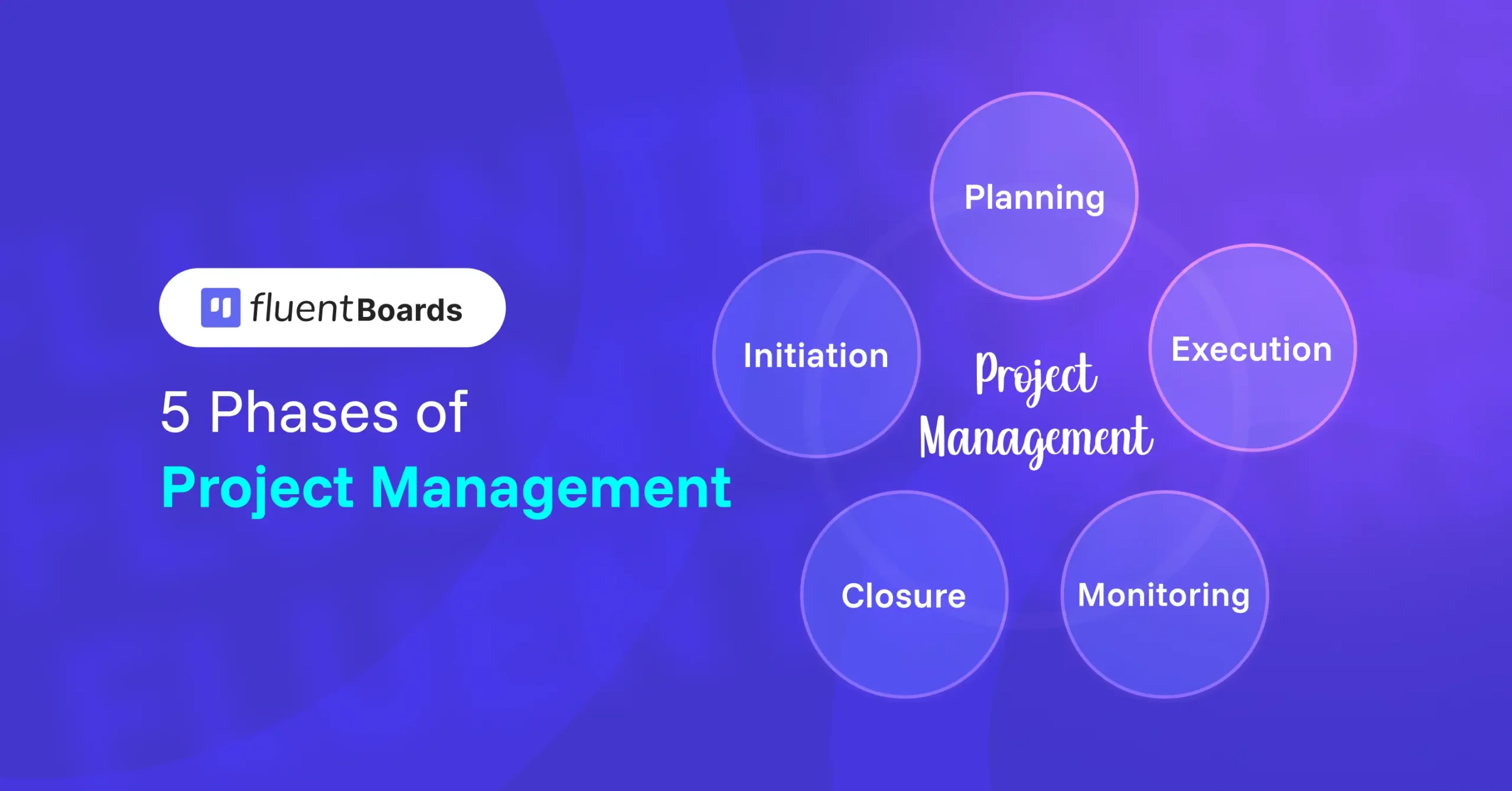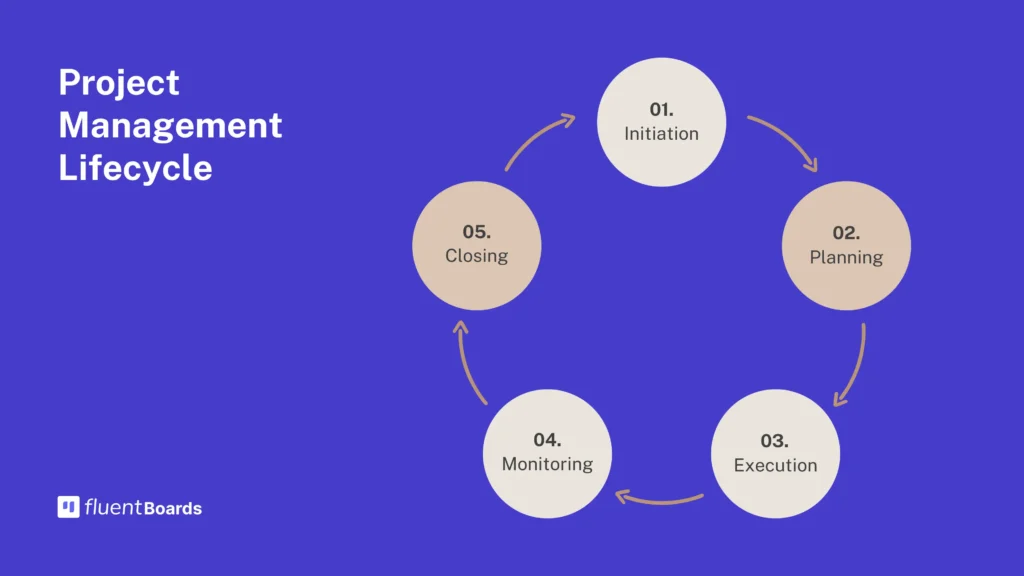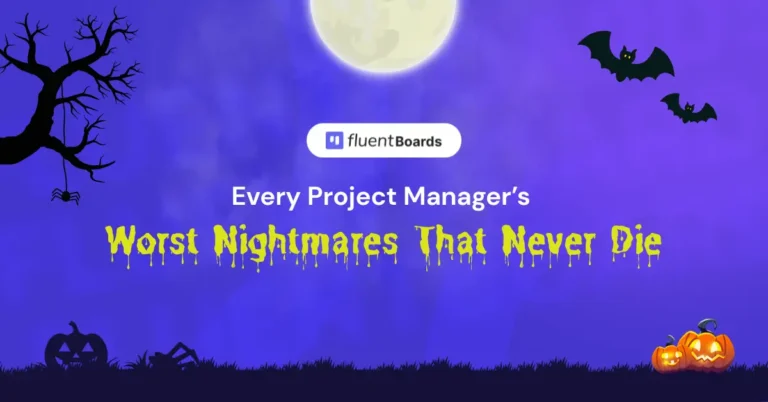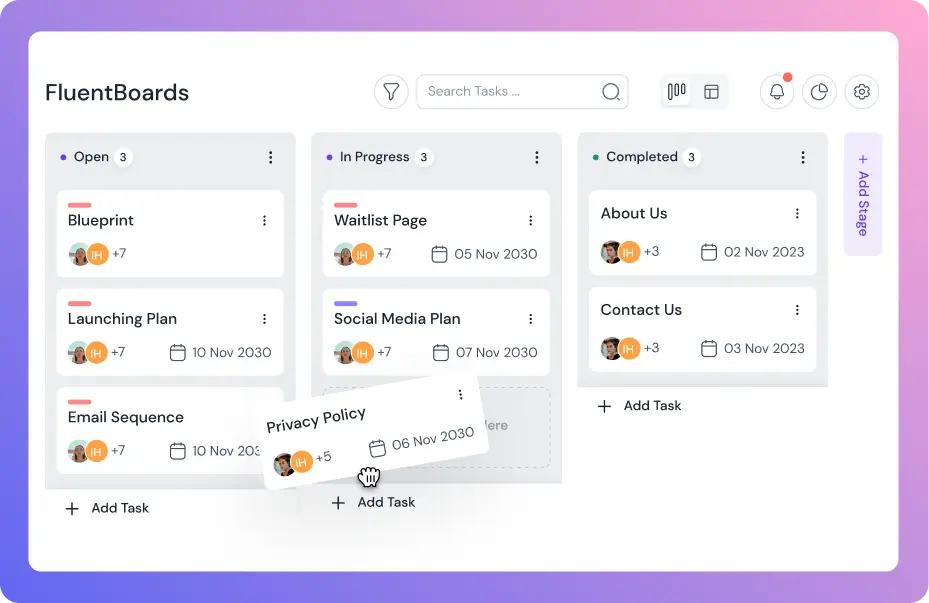
Project Management Life Cycle: 5 Phases of Project Management
Remember the Water Cycle we learned about in school?
It starts as vapor in the air, forms clouds, falls as rain, flows through rivers, and eventually returns to the ocean. And then, the cycle repeats itself – one cycle ends, and the next begins!
Guess what? The story of project management is no different!
Every project goes through a lifecycle with distinct phases that follow one after another. And just like the water cycle, a completed project doesn’t just end. It moves forward, bringing new experiences and expertise for the next one.
Interested in learning more about the phases of project management and their key aspects?
Let’s dive in, it’s going to be an interesting read!
What is the Project Management Life Cycle?
The project management life cycle is a process that guides a project from start to finish. It breaks down the project into clear stages, making it easier for teams to plan, manage tasks, and complete the project on time.
Sounds confusing?
Well, a real-life example might help!
Let’s say you’re planning to launch a new website. What would you do?
First, you would gather requirements and set the overall goal. Then, you’d create a detailed plan for the website’s design, development, and content. After that, the real action would start: you would begin building it and ensure everything goes as planned. And finally, the website goes live—congratulations!
Now, take a deep breath and look closely!
Have you noticed that your entire website launch project has naturally gone through a well-defined process, including initiation, planning, execution, monitoring, closure, etc.?
Well, we’re referring to this well-organized process as the project management life cycle.
How Many Phases in the Project Management Life Cycle: Four or Five?
When discussing the project management life cycle, there’s often debate about the number of phases involved!
According to the Project Management Institute (PMI), a project usually goes through five phases: Initiation, Planning, Execution, Monitoring, and Closure. And, no need to mention, that this is the most commonly referenced and popular model.
On the other hand, some methodologies merge the ‘Monitoring’ phase with the ‘Execution’ phase. According to them, monitoring goes hand in hand with execution and a project life cycle basically has four phases: Initiation, Planning, Execution, and Closure.
And, here arises a vital question: which approach should you choose?
Well, we can’t answer this question directly! Instead, we would say that both approaches have their benefits.
Larger projects may find a five-phase model more beneficial, while smaller projects might prefer a four-phase structure for simplicity. And, the choice between four or five phases will largely depend on the project’s complexity and your preferred way of working.
Just make sure one thing – no matter which approach you take, follow it consistently and adhere to all the project management basics!
Also Read: Why Project Management Matters
5 Phases of Project Management
Most projects follow five dedicated phases: Initiation, Planning, Execution, Monitoring, and Closure. Each of them has its own specific goals and tasks, keeping teams organized and on track from start to finish.

Let’s dive into each one and see how they play out in real life.
Initiation
The project initiation phase of a project is where the project begins. This is the stage where you define what your project is all about and evaluate whether it’s worth pursuing. It’s like that moment when you have an “Aha!” idea and start writing down the basics.
This phase is crucial for laying the foundation of the project. During this phase, you essentially:
- Define the objectives of the project and set the goals you aim to achieve by the end
- Identify all stakeholders, including customers, team members, and key decision-makers
- Decide which project management tool you’ll use
Example: Imagine you’re planning to launch a new app. First, you’d determine who your target users are, what the app will do, and why it’s important. You’d also get approval from key stakeholders (like investors or decision-makers) before moving forward. Those would be your initial steps, right? And that’s exactly what the initiation phase is all about.
Planning
The project planning phase is all about figuring out the “how” and “when” so that everyone knows what’s happening next. This is where things get serious! You’ll take that initial idea and develop a workflow to guide your team from start to finish.
In this stage, the following steps take place:
- You calculate the time, costs, and resources required for each task
- By pinpointing potential risks you develop strategies to address them, while also preparing for both expected and unexpected project management issues
- You establish a clear communication plan and also select the tools you might need
- Develop a project charter, which acts as formal authorization for the project to begin
Quick Info: A project charter is a high-level document that outlines the project’s purpose, constraints, objectives, stakeholders, and overall scope.
Example: For your app development project, you’d outline tasks like designing the user interface, coding the backend, and testing. You’d assign deadlines, allocate resources, and ensure the necessary tools and technologies are in place to keep everything running smoothly.
Execution
The execution phase is when the team starts building, developing, and delivering the project outputs. This phase basically brings a plan to life and often the longest and most visible phase of the project.
During this phase, resources are allocated, tasks are completed, and deliverables are produced. As the project lead, your role is to ensure:
- Using the Work Breakdown Structure (WBS), you break the project into manageable tasks and create a to-do list for both yourself and your team members
- Team members understand their tasks, and deadlines, and stay aligned with the plan
- Stakeholders remain informed and engaged
- The project progresses toward its end goals strategically and collaboratively
Quick info: Work Breakdown Structure (WBS) in project management is a method that divides a project into smaller, manageable tasks, making it easier to plan, organize, and track progress.
Example: It’s time to build the app! Developers start coding, designers finalize the layout, and content creators craft the app’s messaging. Meanwhile, you ensure everyone is on the same page and meeting their responsibilities
Monitoring
While closely tied to execution, the monitoring phase is an ongoing process that ensures the project stays on track. This phase runs alongside execution and helps you spot any issues early so they can be resolved before becoming bigger problems.
In this phase:
- Project managers track project KPIs to see whether the project is meeting deadlines, staying within budget, and producing quality results
- If risks arise—whether predicted or unexpected—they are addressed with quick and effective changes
- Any changes to the scope, budget, or timeline are carefully managed to minimize disruption
Example: Let’s say your app’s development is taking longer than expected. In this phase, you would identify what’s causing the delay and adjust deadlines or reallocate resources accordingly.
Closing
The closing phase wraps up everything. Once your project is complete, it’s time to hand over the final deliverables, celebrate your success, and reflect on what you’ve learned.
Though it marks the finish line of a project, as we mentioned earlier, an ending always opens the door to a new beginning. And, to ensure your next project is even more seamless and successful, you should:
- Identify all the challenges you faced
- Highlight what worked well and what could have been done better
- Evaluate everyone’s performance, recognizing the true rockstars, unexpected contributors, and those who didn’t meet expectations
- Gather feedback from everyone involved, including teammates, stakeholders, and users
- Document everything and create a summary of the entire workflow
Example: Your app is finally live! You gather feedback from users, tie up any loose ends, and reflect on the project to see what worked and what could be improved for the future.
Quick Tips to Get the Most Out of Every Project Management Phase
To guarantee your project’s successful completion, you need clear strategies for every stage. For your ease, here are some quick tips:
Initiation phase:
- Understand the basics (what, why, and how) of your project
- Identify all stakeholders and actively engage with them
- Assess the project’s feasibility before starting
- Choose a project management tool considering its pricing and scalability
Planning phase:
- Align everyone and create a detailed plan
- Uncover hidden risks and prepare strategies to address them
- Allow flexibility in your plan for unexpected challenges
- Assess your team’s strengths and weaknesses to build a winning project team
- Determine your best project team structure
- Establish meeting procedures, communication channels, and meeting frequency early on
Execution phase:
- Keep objectives and goals documented and accessible to all
- Take full advantage of team collaboration by fostering a collaborative environment
- Avoid overburdening team members
- Prioritize tasks that are most important and need immediate attention
- Involve stakeholders to ensure transparency
- Communicate clearly and effectively
- Lead by example and manage the project team like a pro
Monitoring phase:
- Break the project into smaller, actionable milestones
- Use project management tools with real-time dashboards to track progress
- Conduct regular, well-planned meetings to stay aligned
Closing phase:
- Gather feedback from everyone involved, no matter their role
- Document all feedback and key findings for future reference
- Celebrate your success with the team to keep morale high for the next project
Check out our detailed blog on project management tips designed to help you succeed
Lessons to Take Forward
Project management is all about moving step by step to turn ideas into success.
Each phase, from start to finish, plays an important role in making your project a reality. By planning well, working as a team, and staying adaptable, you can achieve great results.
So, start by understanding the basics, make a bulletproof plan, execute like a pro, monitor like a detective, and finish strong. Besides, don’t forget to learn from every experience and use those lessons to make your next project even better!
Thank you for reading this far. Wishing you luck and a great project management journey ahead.
Let’s redefine project management with FluentBoards!
Get Tips, Tricks, & Updates
We won’t send you spam.









![how to create a project management workflow [x steps] (2)](https://fluentboards.com/wp-content/uploads/2025/11/How-to-create-a-project-management-workflow-x-steps-2-768x402.webp)





Leave a Reply